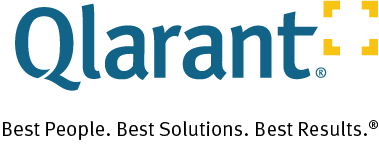Continuing Down the EHR Path
In my last blog we looked at the Health Insurance Portability and Accountability Act (HIPAA) and how it helped corral security, electronic signatures, coordination of benefits, and unique identifiers such as the national provider identifier (NPI). HIPAA was more than just a method of ensuring the privacy of protected health information (PHI) and who can have access, it helped bring us one-step further in the evolution of the EHR.
 So not to bore you with a bunch of history, let’s skip ahead another decade or so to the Health Information Technology for Economic and Clinical Health (HITECH) Act which was enacted as part of the American Recovery and Reinvestment Act of 2009. You may be wondering how did the EHR play a role in HITECH and what was the purpose of this Act? The short answer is that it was to promote the adoption and “meaningful use” of health information technology. Now for the long answer.
So not to bore you with a bunch of history, let’s skip ahead another decade or so to the Health Information Technology for Economic and Clinical Health (HITECH) Act which was enacted as part of the American Recovery and Reinvestment Act of 2009. You may be wondering how did the EHR play a role in HITECH and what was the purpose of this Act? The short answer is that it was to promote the adoption and “meaningful use” of health information technology. Now for the long answer.
This act was passed to show that the federal government firmly believed in the benefits of using the EHR by encouraging the widespread adoption of the EHR and authorizing the Centers for Medicare & Medicaid Services (CMS) to incentivize doctors and hospitals that chose to use a “certified” EHR. doctor tablet

The incentives were intended to drive adoption of the EHR in order to reach the goal of every American having a “secure” EHR (remember HIPAA?).
What were the rewards? Providers who implemented and proved meaningful use of a certified EHR prior to 2015 were eligible for incentives. This meant a practice that had a certified EHR system in place were actually paid more money than a practice continuing to use paper charts (or maybe in reality, it was just to help practices recover some of the added costs with implementation and training of staff).
We’ve all heard the saying, “every cloud has a silver lining”; well, perhaps, every silver lining has a cloud too. After 2015, Medicare was authorized to begin to administer financial penalties to physicians and hospitals that do not use an EHR. These penalties involve reducing the provider’s payments by 1 percent per year for up to five years. Also, as with any technological initiative and operational change, it is important to stay abreast of the latest security updates to keep sensitive information secure. The ability to demonstrate meaningful use that includes specific objectives, milestones, and metrics needs to happen at regular intervals as well. This means the need and expense of employing qualified individuals and updating software become factors.
As part of HITECH, there are requirements to monitor:
- The electronic exchange and use of health information.
- The use of an EHR for each person in the United States.
- Privacy and security protections for electronic exchange of individually identifiable health information.
- Security methods to ensure appropriate authorization and electronic authentication of health information and technologies or methodologies for rendering health information unusable, unreadable, or indecipherable.
- A process for receiving communications concerning recommendations and policy changes under or related to this Act.
- The fostering of the public understanding of health information technology.
- The use of health information technology in improving the quality of healthcare, reducing medical errors, reducing health disparities, improving public health, increasing prevention and coordination with community resources, and improving the continuity of care among healthcare settings.
- Plans for ensuring that populations with unique needs, such as children, are appropriately addressed in the technology design, as appropriate, which may include technology that automates enrollment and retention for eligible individuals.
As discussed in our @Face Value blog, how will the smaller practices and providers meet these challenges? How will hospitals meet these challenges with all their other challenges (i.e. doctor and nurses shortages, patients who cannot pay for services rendered)? What is meaningful use? Come back to the next blog as we continue to peel this onion.







